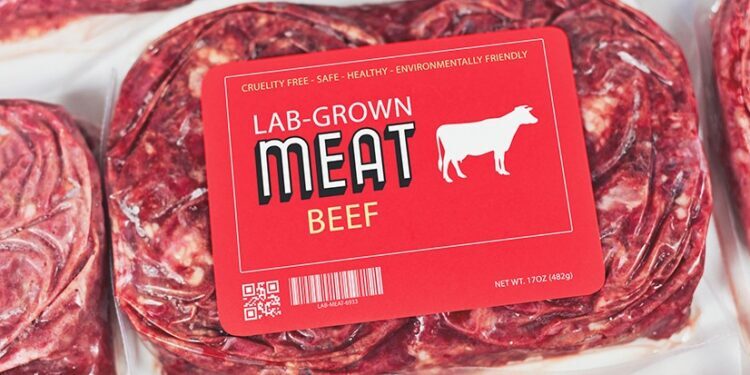
These are the startling conclusions of ground-breaking work recently published by a group of chemists and food scientists from the University of California. It turns out that 'pharma to food' production is a significant technological challenge. The major problem with lab meat is that it uses growth organisms that have to be highly purified to help animal cells multiply. Compared with environmental savings on land, water and greenhouses gases, the whole bio-process is noted to be "orders of magnitude" higher than rearing the actual animal.
"Our findings suggest that cultured meat is not inherently better for the environment than conventional beef. It's not a panacea," said co-author Edward Spang, an associate professor in the Department of Food Science and Technology. The study found that even across scenarios using lower pharma standards, efficient beef production outperforms cultured meat within a range from four to 25 times. This suggests that investment to advance more 'climate-friendly' beef production may yield greater reductions in emissions.
The route to New Zero is littered with improbable technologies that promise much - and give endless opportunities for virtue signalling - but deliver little. While many countries press ahead with plans to destroy conventional animal husbandry, the options for new ways of actually feeding populations look thin on the ground. To be fair to Monbiot, he has picked up on the problems of lab meat, noting in a recent blog post that "the more I've read about cultured meat and fish, and the more I've come to appreciate the phenomenal complexities involved... the more I doubt this vision will come to pass". Always the worrier, Monbiot asks, "How can mass starvation best be averted"? Not removing the 337.18 million tonnes of global meat production in favour of flaky factory solutions might be a start.
The California study could throw a major stick into the spokes of the lab-grown meat bandwagon, which to date has had a largely uncritical mainstream media ride. Grocery Gazette's cheer-leading report noted that the sector was predicted to "rapidly increase its market share within the food industry". Research was quoted suggesting cell cultured meat was expected to make up almost quarter of global meat consumption by 2035.
The authors in California acknowledge that lab-grown meat ventures have attracted around $2 billion of investment to date. Early reports on feasibility were bullish with some predicting a 60-70% displacement of beef by 2030-2040. But of late, sentiment has waned with more conservative estimates noting a 0.5% share of meat products by 2030. As noted, the huge problem in producing lab meat is the presence of endotoxin which is said have a variety of side effects including harm to in vitro fertilisation. In pharmaceutical labs, animal cell culture is traditional done with endotoxin having been removed. There are many ways to remove the unwanted substance, but the use of these refinement methods "contributes significantly to the economic and environmental costs associated with pharmaceutical products since they are both energy and resource intensive".
The study also highlights concerns about past scientific consideration of lab-grown meat. There is said to be "high levels of uncertainty in their results and the lack of accounting for endotoxin removal". It is further noted that despite researchers "clearly reporting high levels of uncertainty", the results were often cited as clear evidence for the sustainability of lab-grown meat.
So a much-touted green Frankenstein food solution - arguably to a problem only promoted in alarmist circles - looks to be biting the dust, sweeping away a billion or two of credulous capital in the process. As the authors note, investing in scaling this technology "before solving key issues like developing an environmentally friendly method for endotoxin removal... would be counter to the environmental goals which this sector has espoused".



Comment: Inherent in the Green ideology and agenda is the idea that not only can man do better than nature, but that man is 'God'. When people are fed such unnatural morsels, the universe ultimately will manifest the consequences. For some it is easy to see. For others, a bit of suffering has to be endured in order to accept reality and their stature in the cosmos.